THE GLOBAL SOCIAL MOVEMENT CENTRE





A GUIDE FOR CIVIL SOCIETY ORGANISATIONS

The purpose of this guide is to help CSOs and others change organisational culture and practice to better understand and support social movements so they can achieve systemic change together. This movement mindset guide comes with a toolkit that is not just about theoretical concepts; the toolkit guide is a roadmap for action. It is designed to empower CSOs to adapt their organisational culture, practices, and strategies to better support social movements. By embracing a movement mindset, CSOs can become genuine allies, catalysts for change, and driving forces behind the collective pursuit of a more just, equitable, and transformative world.
Building a Movement Mindset is a brief guide that consists of two parts:
An easy read on changing organisational culture and practice toward social movement engagement and support.
A toolbox to initiate or deepen social movement engagement and support.
Groups that will find this useful include:
Civil Society Organisations (CSOs) and other institutions that are initiating (or considering initiating) support to social movements.
Donors and others who want to learn about social movement support and how to best support social movements as external allies.
This guide will help CSOs and others gain a clearer understanding of:
The nature of social movements and why organising and people power are important change strategies.
Multiple ways to engage with and support social movements. The changes in organisational culture and practice needed to support social movements while avoiding compromising the movements in the process. Their own motivation and ability to work with social movements.
This guide is created and authored by the Global Social Movement Center (MOVE) which supports social movements directly through regional hubs as well as engages CSOs and others in becoming better movement allies. ActionAid Denmark, Global Platform El Salvador, ActionAid India, ActionAid Nigeria & TCDC, provided particular support to this guide, leveraging more than a decade of experience in supporting youth-led activism and social movements globally and nationally.
We hope this guide will both inspire and educate you and your colleagues on engaging with movements in ways that bene t both movements themselves and your organisation. Use it on your own or reach out to us for more guidance at move-global@globalplatforms.org
1 2 3 4 5 6 7 8 9
THE POTENTIAL OF SOCIAL MOVEMENTS PAGE 5
HOW TO DEFINE A SOCIAL MOVEMENT PAGE 6
ORGANISING AS A STRATEGY FOR CHANGE PAGE 7
BASIC CONSIDERATIONS WHEN ENGAGING WITH SOCIAL MOVEMENTS PAGE 7

ORGANISATIONAL CHANGE IS COMPLEX AND TAKES TIME PAGE 7
WHAT DOES MOVEMENT SUPPORT LOOK LIKE? PAGE 9
THE LIFE CYCLE OF A MOVEMENT PAGE 14
COMMON CONCERNS AND DILEMMAS WHEN ENGAGING WITH SOCIAL MOVEMENTS PAGE 16
10
Ten years ago, ActionAid Denmark embarked on a journey to work with social movements and informal youth-led groups. We started out of necessity. We felt something was missing in our theory of change. The world was facing looming global crises - ecological breakdown, widening inequality, the spread of authoritarianism and weakening of fundamental rights - and yet when we looked at our own work, while much of it was good, it was hard to connect the locally-rooted programming in communities to the fundamental and systemic changes needed. We were shifting oodwaters with a spoon. We also acknowledged that — like many other civil society organisations — we were largely disconnected from a surge of impactful social movements that were addressing these same large-scale societal, economic and environmental crises that we, too, hoped to address.
We resolved to become a better partner and ally to social movements and activists on the front line of these struggles and nd a way to link this up to our rights-based work with local NGO-partners and communities. In looking for partners in this journey, we joined up with ActionAid India, ActionAid Nigeria and MS TCDC in Tanzania, each of whom have a history of working with social movements in their own contexts. ActionAid India pioneered support for rights-based organising and rooted campaigning over twenty years ago. ActionAid Nigeria has worked extensively with the women's movement, the labour movement and student movements in Nigeria and sought to marry this to donor funded programing within rights and community development. MS TCDC has served as a convening and learning space for movements in Africa and globally. It has accommodated large Pan African movements like Africans Rising, and Afrika Youth Movement. It also offers tailored support and strategic expertise for smaller groups with a local or national focus. Global Platform El Salvador has worked with popular education, nonviolent methods and campaigning since 2010, accompanying youth-led movements and networks in Central America to articulate demands and recognition in their resistance against extractivist projects and policies that violate Human Rights.
Our journeys have been full of successes and failures. In the process, we have learned how much being a good ally to movements is about looking inward and changing our own culture and practices. We could not just continue with business as usual and simply add them into our existing operations as another constituency or “partner organisation”. We have had to profoundly change our strategies, examine our ways of thinking and working, and introduce more adaptive and agile structures that allow us to successfully support inherently exible and uid movements. While this is still work in progress, we have adapted and learned a lot.
We now see an increasing interest from others in civil society, donor organisations, and other institutions to learn more about movements and how to best support them. To address this need, we founded the Global Social Movement Center (MOVE) in 2022. MOVE provides direct support to movements and frontline activists, and works with interested stakeholders and institutions to help others improve their work with movements.
This guide is our attempt to share why movements are an important driver of change, how they work, how CSOs can best support them, and what organisational change is needed to do so. It is based on what we believe is key knowledge from relevant research, as well as our own experience with this work and our organisational shift toward adopting a movement mindset. It is not a guide set in stone. We are still learning from our work and from our partners. We hope you will nd this useful, and we would love to hear your experiences and questions so we can make this guide even better.
Sincerely,
Sandeep Chachra, Executive Director of ActionAid India; Ene Obi, Country Director of ActionAid Nigeria, Makena Mwobabia, Executive Director MS TCDC, Ricardo Salinas & Remberto Ramirez, Managers Global Platform El Salvador and Tim Whyte, Secretary General of ActionAid Denmark1 A Decade of Activism, ActionAid Denmark Strategy 2023-2027,

Times of unprecedented global crises call for a deep and structural recon guration of politics and power. A recent UN report2 recognizes the “invaluable contributions to individual, collective and societal wellbeing” promoted by social movements and concludes that actors such as civil society organisations and governments must embrace and enable social movements as essential partners in building back better from the intersecting crises of today including declining democracy, the rise of authoritarianism, ecological breakdown, diminishing social solidarity and welfare, push back on women’s and LGBT+ rights, and heightening militarisation and con ict, among others.
The space for building a strong civil society that keeps power holders in check is rapidly shrinking and formal civil society organisations, media, unions, and human rights organisations are slowly disappearing or losing in uence. Governments are cracking down on fundamental freedoms and rights including the right to protest, as Freedom House’s Freedom in the World report3 and CIVICUS’ Protest Assessment 20224 revealed. We need fresh approaches to reverse these trends. Joining hands with social movements is one such approach — and perhaps the most important one.
In collaborating with social movements, we focus on one of history’s most impactful forces: the power of people. History has proven that we should not look to rulers, lobbyists, industry leaders, elected of cials, and diplomats alone to make social change, but to the people who are themselves facing daily threats and problems in their lives. Throughout modern history people have built collective power, with success in achieving seemingly impossible large structural changes. Erica Chenoweth and Maria Stephan explore this in their foundational research “Why Civil Resistance Works5. Each major new normal throughout modern history has arguably been realised through the unrelenting struggle of people resisting the status quo against the odds: women’s rights to vote, work, and access birth control; civil rights and freedoms; the downfall of apartheid; decolonisation from former empires; revolutions and the deposing of dictators; the end of wars — the list goes on and on.
Movements can coalesce the power of ordinary people to achieve seemingly miraculous social and political change, but they don’t bloom as magically and spontaneously as onlookers often believe. They also require much more than simply mobilising the otherwise idle masses through public demonstrations. Successful social movements achieve structural change through arduous grassroots organising, leadership and movement building, small actions and advocacy efforts. These initiatives may feel hopeless or redundant for several years before a movement realises a concrete win or becomes visible to non-members.6
CSOs and social movements can amplify each other’s strengths: CSOs are generally more stable and longer-lasting entities with the capacity to plan, evaluate, and document progress. They have access to diverse allies and resources. Social movements are intrinsically motivated informal groups who can move public narratives. They are quick to adapt to circumstances, often acting in creative and disruptive ways, and seeking transformative changes with the courage of conviction. We can combine these strengths to take more informed and strategic risks, learn from challenges, grow in mass faster and more sustainably, and ultimately achieve truly systemic and durable change.7
2 United Nations Human Rights Of ce https://www.ohchr.org/en/press-releases/2022/10/governments-must-embrace-and-enable-social-movements-key-partners-building
3 Freedom in the World 2023 - marking 50 years in the struggle for democracy
4 CIVICUS’ Global Assessment Protest Rights, October 2021 - September 2022

5 Chenoweth, Why Civil Resistance Works.
6 Peter Ackerman, The Checklist to End Tyranny: How Dissidents will Win 21st Century Civil Resistance Campaigns, 2021
7 Phil Wilmot, Sustaining Social Movements, 2020
The de nition of social movements that guides our work is:
challenges they face and their identity as a group.
We have come to this de nition based on our experience and inspiration from various movement research8 9 which you may want to explore further.
Social movements are dif cult to de ne de nitively. They are a direct product of their national, regional, historical, cultural, and political context and thus can take many forms. Some movements may not even call themselves a movement. If you are asking yourself whether the group you are supporting can be considered a movement, you can look for these characteristics:
• They build power from the ground up by using organising as a strategic approach with the aim to shift power.
• The majority of their leaders and members are the people affected by the issue they address. Other allies might be in the struggle in solidarity with them.
• Internal structure, power, and decision-making are at least partially decentralised. There is no one person who issues orders or speaks for the entire group.
• Their goal is to achieve comprehensive systemic change, but part of their strategy often includes gaining support for and winning smaller single issues as intermediate or short term goals.
• They utilise mass mobilisation and a spectrum of various tactics to shift power away from their opponents and toward the people. They are engaged in a struggle for power.

• They seek to create unity, solidarity, and cooperation with their cause across various demographics and sectors.
Social movements are often not just one single group of people organising, but consist of several different entities working towards the same goal, each engaged in mobilisation, advocacy, and/or public actions. Sometimes these groups collaborate on their actions and campaigns; other times they do not. These singular entities are not movements on their own, but in the context of a particular struggle, they are part of a broader movement. Even movements themselves can be part of broader movements, such as a national climate struggle that is also part of a global land rights movement.
8 Little, W. (2014). Introduction to Sociology – 1st Canadian Edition. Victoria, B.C.: BCcampus. https://opentextbc.ca/introductiontosociology/ 9 ed.D.S. Meyer et al (2002), Social Movements: Identity, Culture and the State
Social movements are purposeful and organised groups of people who engage in various forms of collective actions towards a common social change goal which is closely linked to the
This means that apart from directly supporting more narrowly de ned community-based social movements, we also work more broadly with ‘movement support’ in broader contexts, supporting the organising, movement building, and strategic planning done by smaller entities that are part of a larger movement. What is important for us is not how a group de nes itself, but what it aims to achieve and how. For example, we may support community-based artists like Carti in Guatemala in their advocacy efforts for local rights as part of our standard programming, but supporting movement building and leadership development for a movement like the one against the East African Crude Oil Pipeline consisting of CBOs, HRDs, unions, citizen coalitions, and iNGOs might look much different. Stakeholders like community groups, unions, media, activists, artists, faith communities, advocacy groups, think tanks, CSOs, and many others may participate in the life of the movement, but the movement usually feels bigger than the sum of these parts.
Social movements use organising and people power as their main strategy for change. This necessitates activating enough people to partake in struggle to shift public opinion, persuade or coerce power holders to act, or using direct action to intervene where a target has been unreliable, hostile, or unresponsive.
Organising is, according to movement theorist Marshall Ganz in his book ‘Organising: People, Power, Change’10, the process of building relationships, developing leadership, and mobilising communities to take action on the issues that matter to them. This ability of ordinary citizens to take leadership and come together to create change through collective action is called ‘people power’. Organisers focus on building circles of support around key issues and working to create a shared vision for change. These circles can include individuals, organisations, and communities that are united by a common goal. By building these circles, the people organising can create a sense of community and shared purpose, building sustained people power over time that can lead to momentum and support for their demands. Organising should be combined with strategic campaign planning focusing on both long-term and short-term goals. These campaigns involve using a range of traditional, creative, and disruptive tactics.
While social movements have been ghting oppression for hundreds and even thousands of years, CSOs are a newer phenomenon. CSOs and social movements are very diverse. They often have different agendas, which may or may not be transformative and progressive. What is important to note is that not all CSOs are meant to work with movements and vice versa. In order to be a strong ally and contribute to the work of movements, most CSOs need a change when it comes to their culture, practice, attitudes, and structures.
We have collected some of the most important considerations for CSOs and others with an interest in working with movements:
1Engaging with social movements is inherently political. Social movements work to change the status quo and to shift power. Social movements’ leadership and power comes from the grassroots, and they seek to disrupt existing power structures and transform societies. This means that they work to create structural change. Before engaging with movements, you need to understand your organisation’s position on this.
Adaptive and flexible structures. Social movements do not function like CSOs or most other formal organisations. Most movements are loose formations of people organising to achieve a goal with or without a clear strategic plan. You need to adapt your systems to t their ways of working and not the other way around. If movements are treated like formal organisations and expected to have clear hierarchies and bureaucracies in place, your organisation might compromise the nature of the movement and potentially force them into a box that could erode their strength, momentum, and legitimacy among the people.
Risk appetite. Working with movements entails new and potentially bigger risks than traditional CSO programming, including but not limited to political, security, reputational, or compliance risks. This requires a thorough risk analysis and mitigation plan that includes buy-in from all levels of your organisation, and often discussion with potential movement partners.

Organising and People Power as the primary change strategy. Social movements are about building people power which is done by organising people to act collectively and building leadership from the ground up. There is concrete and often disruptive action taken by movement members in public spaces, private spaces, and spaces where the movement is not necessarily invited. Movements’ main strategy is organising, and organising is not neatly programmatic but can be quite messy. Elements like advocacy, mobilising, direct actions, creative expressive actions, and other methods which would in standard programming be project activities are only tactics to movements and need to be actualised through organising.
Social movement engagement and support is about building relationships. Movement support means investing time and resources in understanding the nature of the speci c movement, building strong relationships with its leadership or key people identi ed by the movement, and nding the most appropriate ways and moments to support them. It is a lot more than just funding, although funding can be part of the resources used alongside your time, staff expertise, space and infrastructure, connections, and other CSO capacities. CSOs support movements by meeting them on their own terrain and building trust with them over time.
For practical steps on how to initiate engagements with social movements, see Tool 1-4 in the Building a Movement Mindset Toolbox.
Simply put, all organisations are made up of structure, culture, and people. All three must be addressed when you want to make organisational changes and transition into new ways of working. This often requires long-term investment of time and resources, depending on how complex the change is. It is essential to map possibilities, obstacles, and organisational readiness to change elements of structures and culture, and to determine what people we may need if we do not have them already. Many traditional CSO structures and systems do not align with and can even frustrate movement partners. Examples may include partnership policies, common practices in partnership, systems of legal compliance, accountability policies and procedures, and nancial rules and requirements.
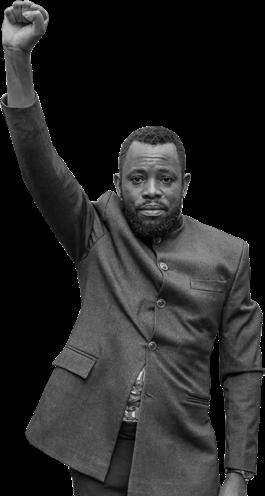
Organisational culture refers to an organisation's beliefs, values, and practices that in uence the behaviour of its workers and members. Working with movements is not a simple addition of a new target or a new programme; it entails changing or introducing new beliefs, values, and practices, none of which can happen overnight. To adopt a movement mindset, organisations must examine their beliefs and attitudes toward how change happens, power relations, hierarchies, risk appetite, and accountability, to name a few11.
Nothing can change in an organisation without bringing its workers and members on board and gaining their buy-in. People are complex creatures that do not just follow a new strategy; they bring their own history and ideas into it, as well as their experience, skills, and belief systems.12 Building a movement mindset requires CSOs to commit for the long haul and recognize there are no shortcuts and overnight changes. This makes it both exciting and potentially challenging. If you are up for that challenge, this guide can support you on that journey (see tool 1-4 in the toolkit guide).
Two key principles of supporting social movements are building strong, long-term relationships, and basing the support on an analysis of the movement's capacity, needs, and goals. Support for social movements must be based on listening to their needs and concerns and prioritising their leadership and decision-making. Movements need space to set their own strategy and direction — even when it may seem ineffectual or complicated from a CSO perspective.
Some of the recent key studies that talk about the importance and types of movement support and assistance are: The role of external support in non-violent resistance from 2021 and Fostering a Fourth Democratic Wave from 2023. Their key recommendations for organisations are to adopt the exibility of a movement mindset, strategically invest in training and building activists’ skills on nonviolent organising, con ict management, negotiations, strategic planning and providing spaces for peer and inter-generational learning, support research and educational efforts that amplify local contemporary histories of nonviolent resistance, and nally engage groups outside of the capitals and facilitate urban-rural, local-national, and grassroots-traditional CSO connections. Our framework of support largely follows and validates these recommendations.
Many assume that movement support is exclusively or primarily about funding. This assumption quickly leads to conversations about the challenges of transferring funds to (or receiving accountability from) unregistered entities. However, the most bene cial support for movements does not necessarily require money transfers, and sometimes funding can even be detrimental to a movement’s integrity or cohesion. Financial support may be needed, but it is important to also understand the broader spectrum of support possibilities, including training, conscientization, strategic guidance, research, and solidarity of various forms.13
In the following section, we share from our experience a few ways we have supported certain movements. Then we explore the broad spectrum of ways to support movements, including basic approaches for funding them. This list is not exhaustive, of course, but it serves to show that there are many ways support can be rendered to movements.
11 Social Movements and NGO’s - Can they get along.
https://www.yesmagazine.org/opinion/2023/01/31/ngo-social-movements
12 Change is driven by people - Conducive Space https://usercontent.one/wp/www.conducivespace.org/wp-content/uploads/2022/10/Systems-Change-is-Driven-by-People.pdf?media=1686302958
13 ActionAid Denmark, MOVE - Movement Support, 2023
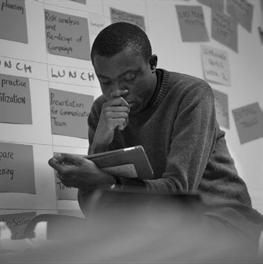

Youth4Parliament is a Zambian youth movement that changed the face of Zambian politics. They managed to grow from a group of 22 young people organised in 2018 to a network of more than 60,000 in 2021, spread across all 10 provinces in Zambia. Their growth resulted in a 21 percent voter turnout increase and far greater youth representation across the political spectrum in the 2021 general elections. Youth won more seats in parliament, mayoral of ces, and district councils than ever before. Of the elected public representatives in Zambia, six youth parliamentarians (out of 156), ve youth mayors(out of 20) and 200+ local government councillors (out of 1624) are active members of Youth4Parliament. The movement through its youth parliamentarians managed to set up and launch the Zambia Youth Parliamentary Caucus at the National Assembly in 202214, the rst of its kind in the history of Zambian politics. The Youth parliamentary caucus advances rights and interests of the zambian youth in Parliament. AA partners have learned about the success of Y4P leading to requests from AA the Gambia, Nigeria, Zimbabwe and Malawi for support in their upcoming elections.
The support they received: Physical spaces to host the movement’s meetings in its formative phase; an assigned movement mentor to support their strategic and campaign planning as well as enhance the capacity of movement core team members to be lead organisers; security and safety assessments; small action grants for mobilising events; legal aid; and safe housing.



Since the military coup in 2021, Myanmar has been experiencing the shrinking of civic space, violation of human rights and increased marginalisation within society. Women, youth, labour unions, artists, journalists, CSO leaders and human rights defenders continue to be targeted, with over 24,740 arrested, and 4,056 killed as of September 2023. Immediately following the coup, a country-wide Civil Disobedience Movement (CDM) emerged, bringing together people from all walks of life in the largest movement in Myanmar’s history. Of particular note is the leadership of youth and women in the movement. In its very initial form, the CDM can be de ned as a mass strike, where both public and private sector workers from the lower rungs of the civil service through to the very top, including health, education, banking employees and many others, refused to work for and cooperate with the military junta. Tactics employed by the movement have also included consumer boycott of all military-linked products and services, as well as international calls for divestment and political pressure.
The support they received: Contributions to the CDM have included exible funding that has been vital for protection and emergency needs, enabling relocations, the procurement of safehouses, legal aid and digital security provisions for members of the movement. This funding has also been used to strengthen the work of the movement and CSOs in their pursuit of federal democracy in Myanmar. Tactics and strategies for civil disobedience and creative activism from the Beautiful Trouble toolbox was circulated online on secure channels few days after the coup and central tactics were later translated to Burmese and circulated together with creative videos that showed on how people could organise and mobilise on their own. Finally support in solidarity actions to get public attention and national governments to support.
Some of the key things CSOs are often fit to offer movements may include:
Staff time and expertise – can make a huge difference. Such availability and talent can help tremendously to build relationships, understanding, and trust with a movement. Meeting and getting to know the movement leaders and the communities where they live and work can do wonders. Movements can bene t from the advice and expertise of staff. Both parties can provide access to other movements, alliances, training, knowledge, events, decision makers, etc. For this to work well, staff must have knowledge and experience in organising and movement building. This necessitates investing in capacity strengthening and/or hiring staff with this speci c experience. Hiring experienced organisers can provide a wealth of insight into a CSO’s movement support work.
Lend physical spaces for meetings, workshops, and other events to provide physical locations for organising, convening, learning, or simply to relax and chat with like-minded people.
Share resources available like toolkits, knowledge products, and platforms on how to organise and build movements. Before developing your own material, look for what is out there and make this available to the movement. Here are just some for inspiration:
Global Platforms - Network for youth-led Activism | Beautiful Trouble | Feminist-toolkits | ICNC - Blog (nonviolent-con ict.org) | New to Activism, Organising and Campaigning?
Translate and adapt existing resources into different languages and formats relevant to your partners. Use the means of communication that is commonly used in communities of your context e.g. radio, social media, text messages with small videos or pictures.
Assist with producing research or where to find existing research. Proper information and data is vital for most movements’ work and the campaigns that they lead. You may have time, access or knowledge that can make this part of the work easier for movements.
Offer training to equip activists with necessary knowledge and tools on how to organise people, build leadership, assess and develop security plans, and develop strong campaigns and creative actions. This can be through self-paced online courses, webinars and workshops, or skill-building sessions and in-person trainings.
Explore our free online training https://gold-actionaidlearning.talentlms.com/ and check out what these strong training partner organisations have to offer:
Beautiful Trouble | Ahel | International Center for Nonviolent Con ict | Africans Rising | Leading Change Network.
Offer longer term coaching and mentorship to leaders or certain groups in the movement to assist with:
a) strategic campaign planning that helps social movements develop and implement effective campaign strategies with a robust risk analysis that leverage media, advocacy, direct action, and other tools to achieve their goals.
b) leadership building and decision-making structure that helps a movement expand, nurture new leaders, develop a culture that re ects their identity and goals, and survive short term losses.
Contribute to building networks and alliances with other groups, movements, and organisations to foster collaboration, coordination, and joint struggle. Create opportunities for mutual learning, sharing of experiences, strategizing, and connecting with one another. Many struggles are closely connected and bene t from being lifted from local to regional or national levels. CSOs can convene groups themselves — or better yet, support movements to organise their own convenings.
Extend and facilitate access to power holders by using your own network and channels to strengthen any advocacy aspect of the movement’s work and help them to nd allies in unexpected and usually “closed” spaces.
Facilitate links with a wider circle of partners and allies especially outside of those movements usually work and engage with. Urban CSOs, for instance, can help connect rural struggles to regional and national struggles, donors, international partners, and other external stakeholders.
Increase the visibility of the social movement struggles by promoting its causes, messages, and stories through media outreach, social media, and other channels.
Stand together in solidarity with the struggle. The legitimacy of the movement (as well as your credibility as a movement ally) can be strengthened if you not only support the movements from the sidelines but also stand with them in their struggle and take public positions against the injustices they are surviving. Transformative solidarity goes beyond symbolic and transactional gestures of joint events or sharing posts. It means building a relationship and developing new strategies and political direction together that requires changing one's self internally, one’s perspective and commitments.15 True partnership means both sides put something on the line. However, consider your context rst. Public solidarity can sometimes be harmful to a movement or a cause, inciting perceptions of co-optation, security issues, or sensitive and complex identity politics disputes. Public solidarity might play into an opponent’s propaganda that a movement is “externally funded” or “sponsored by the West.” Solidarity actions should always be well assessed and planned with the movement that you want to support.
Support the spread of knowledge on movements within mainstream society (e.g. pop culture, lm, tech, sports, art, physical infrastructure, etc). Investigate and demystify public assumptions about people power (that it is only demonstrations, only mobilising, necessarily violent, etc.) and explore viral ways to spark curiosity over the nuances of social movements. As mass uprising is becoming an increasingly common political trend receiving more media coverage than ever before, you can contribute to promoting new and more nuanced narratives and counternarratives about self-organised people that struggle to create change.
Provide or help movements access quick and easy ways to support activists at risk during crises and crackdowns through legal assistance, safe houses, evacuation, rehabilitation, and psycho-social support. There are many rapid response mechanisms available, so you don’t necessarily need an internal one. What is important is to know who you can reach out to for what kind of threat or support on behalf of the activists. Here are some rapid response funds:
Claim Your Space | CIVICUS Rapid Response Funds | Civil Rights Defenders Funds | Protect defenders

Here are some of the elements for which movements may need funding:
Quick and easy ‘action funds’ for collective actions, protests, demonstrations, direct actions, and mobilisation initiatives. These may include providing small amounts for materials, transport, accommodation, food, etc. Either do this on your own or refer the movements to existing funds like:
GURU Direct Action Fund — Beautiful Trouble that provides small action funds monthly, and within a few weeks of the application.
Claim Your Space - Global Fokus that provides rapid nancial support to civil society and human rights defenders at risk within weeks. The mechanism is a response to the global shrinking of civic space; freedoms of expression, gathering and association.
Strategic funding on core mission and campaign work of the movement. In combination with mentoring movements through a period of strategic campaign planning, for instance, it is useful to have a joint agreement on plans and provide funds for the work to be implemented. Movement funding is relatively small compared to funding for other civil society and non-pro t programmes. You can always start with smaller funds and shorter cycles with partners with whom you have little experience. Long term partners with an established level of trust may be better suited for bigger and longer investments.
Honorarium for movement leaders. Providing a movement leader or organiser group with a small monthly fee and social security is a practice well established in some places. This provides the movement with the much needed nancial stability as it frees up the time of its leaders to more fully dedicate themselves to movement work, while also yielding the added bene t of establishing clear lines of communication between the movement and CSO. Supporting individual members or certain groups within a movement needs to be done with careful consideration. It can lead to both accusations of foreign instigators paying people to cause trouble as well as envy within the movement itself. If done badly, it can also force certain individuals into perceived leadership roles and foster counterproductive gatekeeping.
Here are different approaches to funding movements:
Holding/Managing funds for movements. You can set aside an amount for a movement but manage the funds for them so that they can choose to be money-free movements. You can purchase things for them instead of availing cash: campaign materials, banners, transportation, meals for frontline activists, etc. You can also make agreements with service providers directly that they can then use.
Fiscal hosting. You can nd a willing scal host for the movement you want to support who would hold the funds for them. This provides assurance to funders that money will be spent on agreed activities and allows movements to access funds freely without registering or being burdened with extra administration.
Transferring funds to movements. Some movements are established and have an organisational and nancial setup that allows for direct funding.
Find more inspiration here on how we in MOVE have organised our support setup: Movement support.pdf
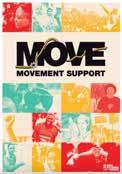
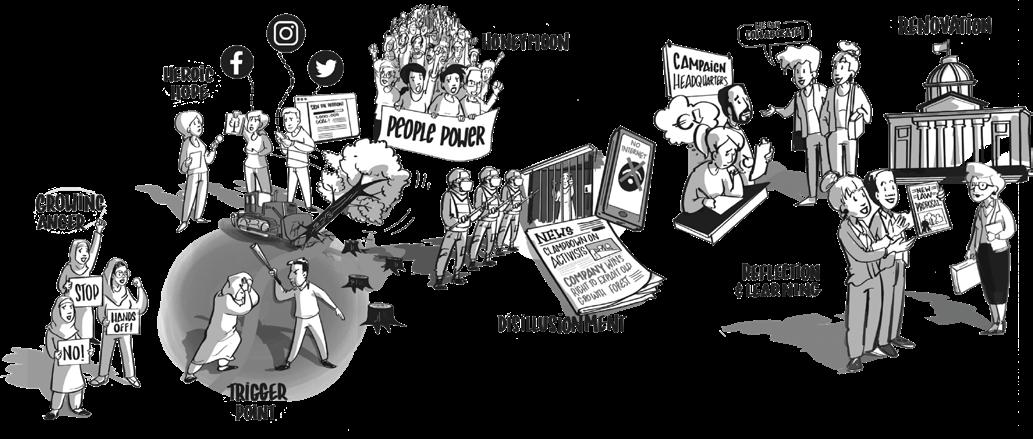
A social movement undergoes various phases based on what is happening in society, the power it holds, and what its members are prioritising and trying to achieve. The Movement Compass is an important tool to deeply understand as a formal institution supporting movements, since it guides us through what to do during each phase of a movement’s life cycle.
The movement cycle phases are: Enduring Crisis, Uprising, Peak, Contraction, Evolution and New Normal. The life cycle of a movement might repeat itself several times before a movement dissolves or fades away. Some movements end during the rst cycle, especially if they are disorganised or if they achieve their goals, rendering their continuity unnecessary. Each phase in the cycle brings its own lists of tasks for movement leadership, as well as unique challenges. Understanding how movements experience these phases is important for any organisation interested in supporting them. The form and timing of an organisation’s support should be aligned with what phase the movement is currently in. A movement’s priorities, capacities, and needs change according to their ever-shifting location in the movement life cycle. What might be effective support for the movement in one phase might be detrimental or useless to them in another phase, for more information on potential areas of support, see tool 5 in the toolkit guide. Our work around the movement cycle took off through inspiration from both Bill Moyers Movement Action Plan and Movement Net Labs Movement Cycle

This is often the birthplace of a movement. Individuals or small groups start getting together because the societal crisis around them is too big to bear. Wounds from injustice have been festering, and they decide to act to change things, despite not yet being well-organised. Oppression is widespread, and people’s anger and frustration are on the rise, but the movement does not have a well-organised team or leadership structure to move people. In this phase, movements need to focus on building or strengthening their own infrastructure, upskilling their members, and engaging in political education with the public. If a movement is regrouping from a previous cycle, it can prepare for a window of opportunity for mass mobilisation by creating or seizing a “trigger event.”
This heroic phase begins with a dramatic event that unleashes public anger and action. This trigger event is an opportunity for the movement to spread the word using all communication platforms to call the public to action and create gatherings for people to join, network, and organise further. People are mobilised in great numbers, looking for a chance to act, but for what and with whom? Movements here need to develop a clear identity with a solid group culture, clarify strategic direction, and use the surge in hope for change by organising mass actions and pressuring power holders. This is usually when the movements start getting mass membership and they need to focus on absorption mechanisms that support rapid growth. The expansion is an opportunity to build structures that sustain the created momentum, establish partnerships with allies, and formulate and communicate long term goals. It is also a good time to work on security skills as their increased power and visibility mean becoming a threat to the of cial power holders.
This is the honeymoon phase for a movement that has just undergone a successful uprising. All eyes are on them. The movement is recognized as the catalyst leading people to a new society, so it is perceived as powerful. For a moment, its members might feel invincible. Radical transformative changes are demanded to overhaul the existing system, perhaps including demands that go beyond initial targets. It feels like the people’s will is winning. The movement must use the power of the public and media to maintain its core message and values while in the spotlight, and leverage this power to bring power holders and opponents to the negotiation table before the movement begins to lose power. The most important thing during this phase is to know when you need to negotiate: too early and you won't have enough power to reach your demands, too late and you will have lost support energy and media attention.

Winning is sweet, but backlash by the state, negative media coverage, and private sector opponents can be brutal. Movements can expect threats, arrests, violence, attempted buy-offs and co-optation, bribes, internal con icts, and member burn out. It is dif cult for core organisers to sustain this intense and draining period. Outside pressure can exacerbate unresolved internal disagreements. Members leave because of stress, ghting, or feelings of failure. It is a time for analysis but also self-care. Movements need to analyse successes and failures, refocus on the remaining core team, and nurture local self-organising. If they are to survive this phase to continue through the cycle, they must celebrate successes and mourn losses, focus on strengthening relationships within the movement, address con icts healthily, and learn from past experiences.

After coming to terms with what has passed, the movement can start rebuilding and formulating new steps in its strategy to attain its vision. A new generation of leaders emerges and should be encouraged to take over through well managed generational changes. New members are attracted and trained in organising, leadership, and creative direct action. Movement culture is strengthened or reinvented based on lessons from the contraction phase. The movement prepares itself for new opportunities — physically, digitally, and mentally — as new wins and losses are to be expected.
This is a phase for utilising new opportunities. The movement nds itself in a new version of the old status quo, with some changes in policies or practices having been implemented both among its cadres and throughout society at large. There are new allies and heightened public understanding of the issues at hand. The movement has a lot of experience under its belt and builds an infrastructure that can withstand the pressures much better this time. The movement has more power now than it had during the rst phase of its cycle. It is prepared to take more bold and creative action, ready to create or recognize the next trigger event. Its members are eager to recruit members and mobilise stronger to achieve grander victories.
When we discuss movement allyship, engagement and support with other CSO and external stakeholders already involved in movements support or who want to get involved, a lot of the same concerns and dilemmas arise. Let’s go over the most common ones.
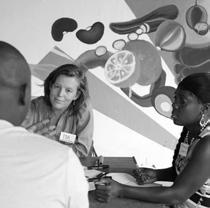
We feel it is too risky to work with movements, what do we do?

Working with movements entails new and potentially bigger risks than traditional CSO programming, including but not limited to political, security, reputational or compliance risks. To deal with these it requires spending time early on in movement engagement doing a thorough risk analysis and mitigation plan that includes buy-in from all levels of organisation.
The political and security risk is one that needs serious attention and analysis. There are many countries where movements and activists can not operate openly, or if they do they expose themselves to grave risks of persecution which prevents movement building. Your analysis might show that movements as de ned here do not exist in your context or you might not be able to provide direct movement support. If you are still keen on nding ways to support movement building and believe in organising as a strategy, you might still nd ways to support individual human right defenders at risk, engage communities in popular education and strengthen civil society to make movements possible in the future.
The other aspect of the political risk is that your operations and licence to function as a CSO in the country can be jeopardised if you support movements, especially ones that seek radical transformative changes to status quo. Since movements are more loose entities with changing priorities and leadership and without CSO accountability mechanisms, there is a sense that activists might do something that will damage the CSO reputation with their member base, funders, or its standing within the country as a credible partner. This aspect of the risk goes both ways - collaboration with CSOs with a public stance and agenda can bring an additional risk of persecution to activists by association like when an openly LGBT organisation wants to support LGBT Human Rights Defenders in spaces where their identity needs to be protected. Both dilemmas point towards the importance of building a close relationship and identifying aligned goals and bene cial ways of working together. Not every movement will be an appropriate partner for CSOs or vice versa. Trusted relationships take time and usually start with small steps. If you are in doubt about whether a movement is the right t, you can use mapping and scoping tools to focus on a few groups you want to engage with smaller initiatives that are low risk and build from there - this is often capacity building or convening.
As with any programming, some level of risk is always there, and what we can do is to mitigate it. Working with structural change is inherently political and it is dif cult to remain neutral while challenging injustice and unequal power relations. Each organisation must decide for itself what its risk appetite is and how far it is willing to go. For the sake of a good collaboration, it is essential for both sides to clarify expectations from the start and keep clear lines of communication on what kind of support is available.16

CSOs are often bound by donor requirements and compliance procedures that can hinder organisational exibility and often represent a very speci c political agenda. You might not be able to in uence the agenda, but you can have an open dialogue with the donor about the risks of the movement support work and how you plan on mitigating them. This needs to happen both when you apply for new funds with a donor and during program implementation. Since donors are increasingly seeing the potential of movement support, they are also open to discuss how that work is different from usual programming, and what exibility is needed around standard compliance procedures. To avoid donors thinking you are neglecting compliance, you must agree on clear procedures on when and how any deviations from standard compliance can occur. This will ensure that donors understand you are not trying to be non- compliant with performance demands but that this speci c type of work does need additional exibility.
One example of this is following nancial compliance rules while funding movements that are not legal entities. Most CSOs cannot deviate on nancial audits and therefore you have to nd a solution that your own auditors as well as donor auditors feel comfortable with. A good starting point is to talk openly with both. Donors can be surprisingly exible, even more so than some CSOs. Funding often comes from many sources so tweaking the system in our program will have an effect on its other elements. One solution can be to sit down with local auditors and write up nancial guidelines together. You can nd an example of this in the toolbox.
CSOs usually sign partnership agreements with local partners outlining the modalities of the partnerships. However, social movements are not always legal or structured entities where there is a clear leadership structure with whom to sign an agreement. What we most often see is that initial movement support is based on agreed Terms of Reference for speci c short-term engagements usually limited to capacity building, convening, or smaller grants. If the engagement deepens as relationships or movements grow stronger or have other needs, you could consider a MoU or even a partnership contract stipulating the areas of collaboration and additional funding. Here you should consider being or nding a scal host (see section 6 and toolkit on funding). Whatever you decide, there is always a solution that can t the needs of the partnership while keeping your integrity and that of the movement.
Many CSOs are used to planning ahead with local partners agreeing on strategic objectives and outcomes and then following a detailed timeline and plan. Movement support cannot follow this blueprint in the exact same way. As a movement often is a more uid entity, your analysis and planning of the needed support will depend on the movement’s capacity and where they are on the movement cycle, and this cannot be planned too far in advance. It is absolutely possible to plan for mobilising events, trigger points, windows of opportunity, re ection and regrouping work, but making an exact workplan many donors require when applying for funds is not possible. The best way to work with movements is to do it with donors and funds that allow for exibility and adaptation to changes in the social and political context. What you can plan in advance is supporting long term organising and movement building from the ground up focusing on interim goals and opportunities for mobilisation and recruitment.17

How do we design a MEL framework that fits movement engagement?
Much like with programming, you need a exible framework to plan for and capture outputs and outcomes of social movement work. If you are new to adaptive programming this might mean you need to research approaches that allow you to adjust your expectations as the political climate, historical events and their internal set up will all have a huge effect on what they work on and how. Find an approach that makes your partnership accountable but most importantly is able to capture lessons from their activism and your contribution to their work. Approaches that are more outcome focused without pre-set xed targets seem to t the reality and sensibility of social movements. We have found Outcome Harvesting to be effective and focusing on Change stories. See the toolbox for some formats for MEL for movement support.
How do we engage without compromising the movement?
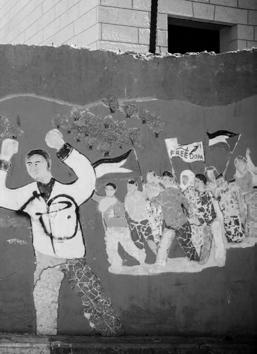

We have been over this element throughout the guide but we mention it here again as it is a key challenge that follows with CSO and movements working more closely together. That a movement starts to change when they start working with CSOs is one common challenge that we hear from movements. Due to requirements from the CSO, the social movements slowly transform into a more formal organisation as the CSO unintentionally pushes the movement to set up structures and systems like the ones the CSO are used to working with. This is a key thing to be attentive to as a CSO working with movements. Movement and CSO are good at different things and should focus their energy at what their expertise is. What can be done to avoid this is to keep a focus to allow the movement to grow on its own and make sure that the people most affected by the issues are able to take leadership on their own terms.18
Can we lose public support and fundraising opportunities by being linked to a social movement?
Suddenly embarking on movement support work may pose a risk to your future fundraising opportunities because your support base might not agree with this shift in your politics or might not understand it. Make a slower transition into the work and communicate regularly with your supporter base on why this is important and what impact the groups have in order to make them your partners on your movement support journey.
How do we know who to work with and how do we select specific movement partners?
Selecting which movement to work with requires careful consideration to align your mission, values, expertise, and available resources with the objectives and characteristics of the movement. We have a list of key factors we like to consider when scoping and selecting movements to engage with.
1. Mission and Values Alignment
2. Expertise and Resources
3. Organisational Capacity
4. Grassroots Connection
5. Social Impact Potential
6. Inclusivity and Representation
7. Sustainability and Longevity
8. Risk Assessment
Connected to this question is also how to systematically scan for new and upcoming movements so that you stay open to issues that are gaining momentum and groups who work on
them. This is something that depends on the context and cannot be done centrally and from a distance. Only when we are intentional in building relations on the ground we achieve legitimacy for when support is needed and in speci c political contexts. Furthermore it helps us to understand what is emerging and what would potentially be a trigger event that could momentum for the movement to grow in strength.
Can we build our own movement as a CSO?

Potentially yes this is possible, but it is very time consuming and often expensive, thereby taking away some of the main bene ts of social movement, namely that movements are very cost effective to support in achieving social change. If a CSO is going to establish their own movement they need to account for how they will get people facing the injustices into leading positions, the CSO will need to handle the power imbalance of some being paid while others are just in the movement. If you are interested in supporting that a movement is built on a speci c subject we recommend that you instead identify leaders within that area that already exist and engage in this struggle. Support them in organising and forming an effective movement with a clear strategy, instead of trying to establish your own movement.19
Can CSOs be part of a movement?
As we have touched upon, social movements can contain many different entities. A CSO can be part of a larger movement. An example of this could be the climate movement that is not one single group but made up by broad coalitions and alliances national, regionally and globally. In cases like this a CSO might be part of de ning the movement and other times more support alongside others.
As we have gone through in the section on de ning movements, this is not easy to de ne and depends on context. Social movements are often confused with other forms of activism or social change work. Let’s look at some of them in turn and see how they are different from constituting a movement on their own social movements as this can assist in understanding what movements are. These different groups or entities are an important part of civil society but we don't think it is bene cial to talk about them as movements.
Advocacy groups - Advocacy groups and some activists often focus on speci c policy issues and work within the existing system by lobbying or legal action. While advocacy and lobbying may lead to policy changes, these strategies don’t by itself lead to a change in people’s values, attitudes and norms on their own as public opinion does not shift in line with policy. Social movements play a vital role in shaping public opinion on political and social issues, gaining mass support that forces power holders to make structural changes, including new policy.
One-off campaigns - Often CSOs mobilise for a big campaign on their chosen issues, focusing on it for a couple of months or longer. The goal is often to draw public attention to the issue either through media mentions, numbers mobilised, numbers reached on social media or online petitions. This is a great tactic for reaching aligned constituencies, but without organising, relationship building & establishing alliances as a strategy to build power and a long term goal containing multiple campaign phases these actions do not succeed in achieving more structural and permanent change.
Spontaneous mass protests – Thousands or millions of people in the streets are an impressive sight, but if there is no plan behind the mass mobilisation on how to utilise the public anger to shift power or tangible demands we would not necessarily de ne this as a social movement. The rise of social media has brought on more mass protest mobilisation than ever before but it almost never leads to lasting change because the mobilisation is rarely followed up by rooted organising.20
19 Donatella della Porta, Mario Diani, Social Movements: An Introduction, 2020Volunteers or members mobilised by a CSOs – People mobilised by organisations can do various tasks within campaigns that are driven by the CSOs and donor agendas. They are often passionate volunteers but are not equal partners that have decision power over the strategic direction and are often not affected by the issue themselves. Social movements are driven bottom-up by the communities affected by the issues they are addressing.
How much do staff actually need to know about movements to be a good partner/ally? The answer is that to be a good ally and to support movement you do need to have proper knowledge and experience with organising and movement building. So invest in capacity building of staff and even more importantly when looking for new staff emphasised experience and knowledge of organising and movement building from your speci c context.
Should every CSO engage with social movements? As already stated a few times, it is important that you are honest in your assessment of your strategic goals, willingness to accept risk, and your motivation to change and engage in movement support. If you do not see compatible strategic goals, if you want to have full control over what and how the goals are achieved, if you want to lead a movement or take the main decision making, if you are not willing to be part of the predictable and consistent support network of a movement and if you are not willing to accept not everything will always go as planned – it is probably not the right choice to start creating movement support programme although there are funding opportunities available.21
As already addressed, organisational change is not a quick x but takes time. It needs both strategic consideration and implementation plans for initiating the engagement and collaboration with movements. We propose that you think of this as a journey towards a movement mindset that includes working with culture, people and structure in the whole organisation.
Here is a 5 step roadmap to change that can inspire this journey. We hope this can help you approach both the strategic re ection - leading to a decision on whether to initiate movement support if this ts with your organisation - and how to get started with the work based on the needed analysis. Don't think of these steps as a linear process. Most likely you will nd yourselves working on several steps at the same time and likely redo steps as it needs more attention. Tools 1-4 in the toolkit guide outlines the implementation of the steps below.
1Political and movement context analysis. Ensure a good understanding of what is organising, movement building and movements in your context combined with what are the issues important to them. We propose diving into this initially through context analysis, engaging in conversations with movement and activists not just once but continuously. Furthermore we propose an in-depth mapping and contextual analysis of movements; what are they in your context, the issues they work with, how they work, what they would potentially need and what are the potentials and challenges for CSO to collaborate with them. We have good experience with having this done by someone external with deep knowledge and experience from movements in your speci c context. This can really serve as a good basis for understanding the area and sharing this broadly in the organisation.
21 Erica Chenoweth and Maria J. Stephan, The Role of External Support in Nonviolent Campaigns: Poisoned Chalice or Holy Grail?, 2021
2 3 4 5
Develop internal and external goals for your work with movements along with an in-depth risk analysis and mitigation plan approved by key leadership. The most central questions are: ”Why do we want to engage with movements?”, “What do we hope to achieve and what can we offer movements to grow in strength?”, “How does this t with the other work that we do?” and “What are the risks involved, how will it affect our organisation and are we ready for this?”.

Initiate collaboration and support to movements. Based on a scoping of the movements that you would like to work with, initiate conversations and start building relations with these movements. If this is a t from both ways, engage them in an initial support plan using the movement cycle for analysis. Keep in mind that as an organisation you do not and probably cannot assist with all needs a movement might have. Support with what you can do well and then you can facilitate the remaining support from others. We have much knowledge on what support partners and mechanisms are out there so don't hesitate to reach out.
Adapt internal structures and systems to enable movement support. Assess your current ability to work with movements based on the plan that you have set with the movements. For this you will probably ensure involvement from departments across the organisation like nance, administration and MEL staff.
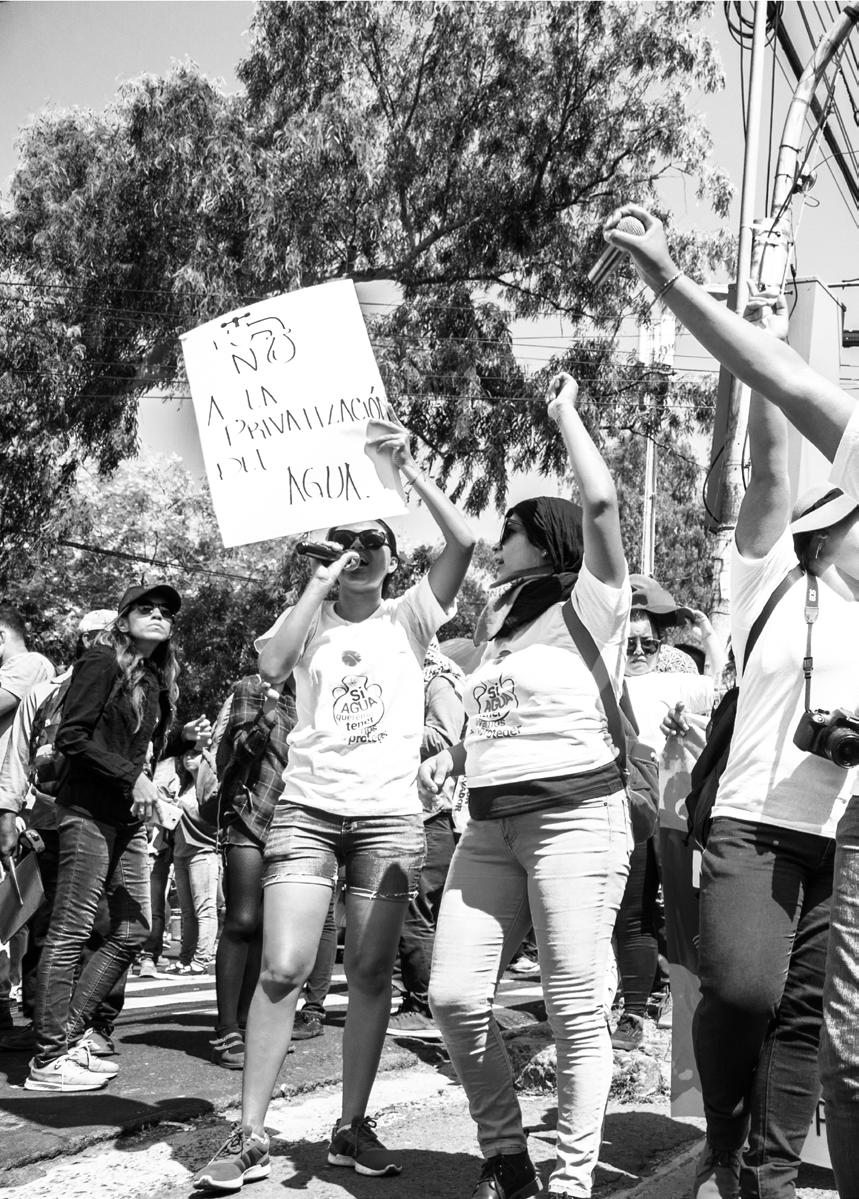
A Decade of Activism, ActionAid Denmark Strategy 2023-2027
The Commons. "Organizing: People, Power, Change.": Leading Change Network, Marshall Ganz, New Organizing Institute, Peter Gibbs, Shea Sinnott (2014).
ICNC Monograph. "External Support: Poisoned Chalice or Holy Grail?”: Erica Chenoweth and Maria J. Stephan (2021).
Global Platforms. "How We Support Social Movements.": Global Platforms (2022)
Global Assessment Report. "Protest Rights 2022.”: CIVICUS.
Beautiful Trouble and Amnesty International. "Social Movements and NGOs: Can They Get Along?": (2023).
Beautiful Trouble. "Solidarity, Not Aid."
United Nations. "Governments Must Embrace and Enable Social Movements as a Key Partner in 'Building Back Better'.": (2022).
Belfer Center. "Why Civil Resistance Works.": Maria J. Stephan and Erica Chenoweth.
INCN. "Fostering a Fourth Democratic Wave: A Playbook for Countering the Authoritarian Threat.": Hardy Merriman, Patrick Quirk, and Ash Jain (2023).
United States Institute of Peace. "Aid to Civil Society: A Movement Mindset.": Maria J. Stephan, Sadaf Lakhani, and Nadia Naviwala (2015).
Chris Rose. "How to Win Campaigns: 100 Steps to Success." (2012).
Phil Wilmot, Sustaining Social Movements, 2020.
Peter Ackerman, The Checklist to End Tyranny: How Dissidents will Win 21st Century Civil Resistance Campaigns, 2021.
Dr. Jacob S. Lewis, How Social Trust Shapes Civil Resistance: Lessons from Africa, 2021.
Donatella della Porta, Mario Diani, Social Movements: An Introduction, 2020.
Ivan Marovic, The Path of Most Resistance: A Step-by-Step Guide to Planning Nonviolent Campaigns, 2021
